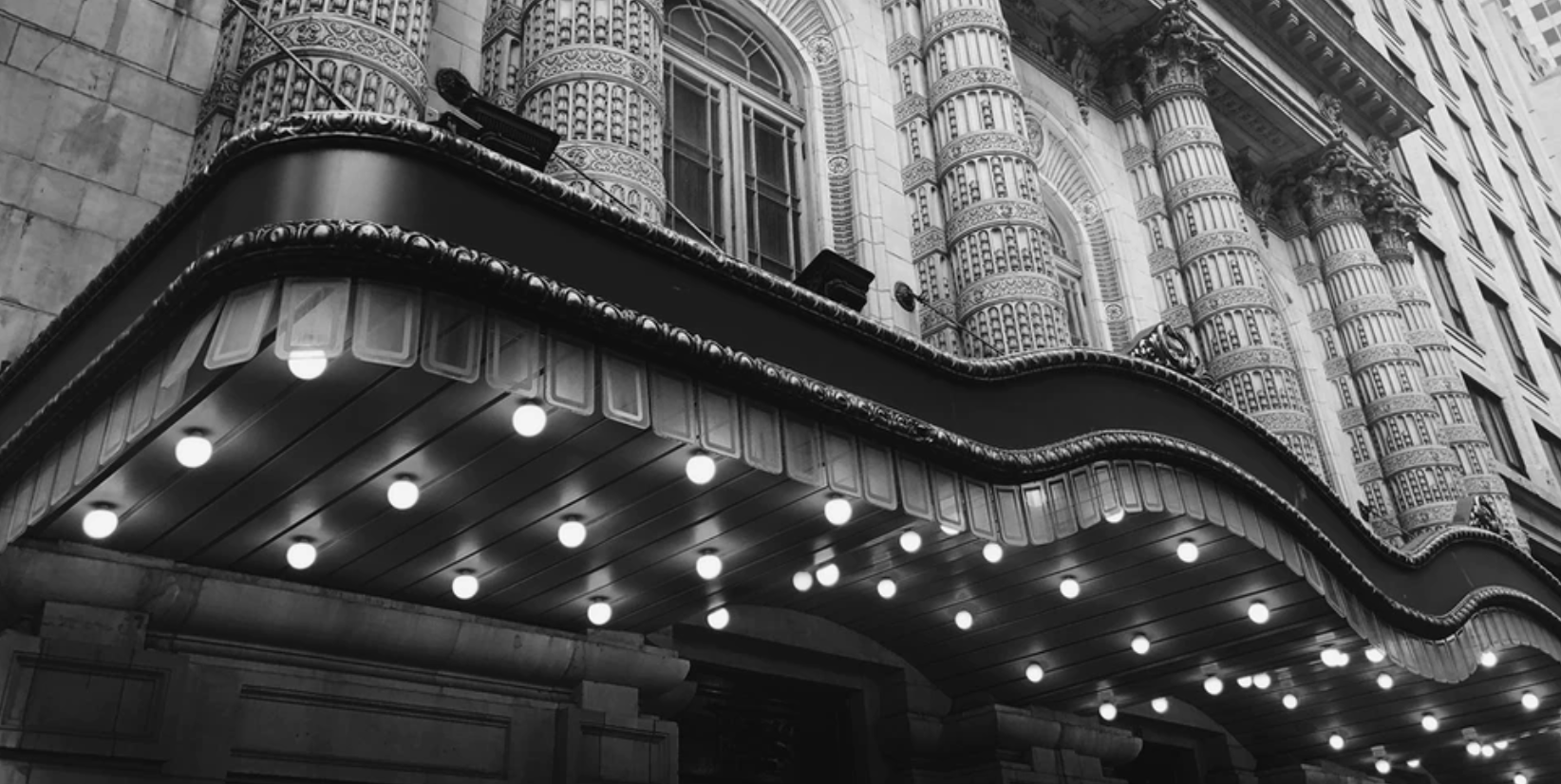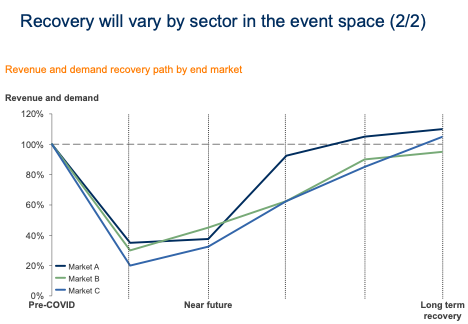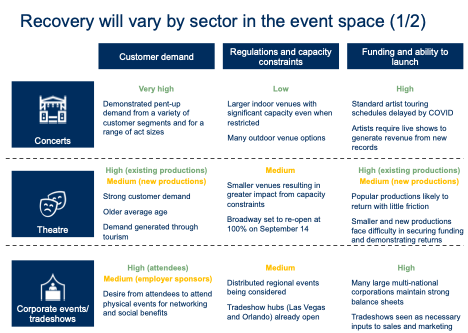
Turning the lights back on! Projecting what pandemic-driven changes will persist in live entertainment
Ross Petersmeyer and Adam Kovalcik
The pandemic knocked the lights out of Broadway shows, live concerts, corporate retreats, and in-person trade shows. As the lights start turning back on, what will the post-pandemic world look like? How will key suppliers to these industries fare? What will the future look like? Our client, a North American private equity firm, asked these and other questions as they looked at a premium supplier serving the entertainment industry.
It’s not only private equity firms who want a crystal ball! In this engagement, we discovered that “what” the future would be meant more to our decision-making than exactly “when” the pandemic would recede. So, as we futurescaped the live entertainment world, we paid special attention to how the whole industry would change post-COVID, and which of these changes would be advantageous or disadvantageous for the acquisition target’s business.
- What lasting changes to the live entertainment industry has the pandemic fostered?
- Which of these changes are advantages or disadvantages for the target company?
“What” more important than “when”
The team recognized that trying to pinpoint when the pandemic will recede entirely is different than knowing what the post-pandemic scenario will likely be for the live entertainment industry. The important thing, then, was to focus on what systemic changes would likely result from the pandemic.
- In entertainment, live gatherings will resume – but perhaps there will be differences in how we come together? Live concerts will return, as can be seen in other geographies, but perhaps they will also have a more frequent virtual component.
- Corporate off-sites and trade shows may continue to have significant virtual components, where before they were more focused on in-person . In health care, it may be safe to say that virtual care will remain and grow as an integral part of better care. (See Will Falk’s report below.)
Knowing what scenarios are most likely really matters. In our approach, of course we used desk research and scoured published reports. Importantly, we also met with target industry experts – buyers and suppliers – to gain valuable perspective. Using both open questions and follow up on specific matters of interest, we are able to triangulate widely shared beliefs with emerging data and to develop potential outlier scenarios.
Also, given the different infection waves in different geographies, we were able to document how parts of the world were opening up to live events, and what was the same as and different from before the pandemic.
Scale and scope of change to industry
Importantly, different sectors or industries are likely to change significantly, and others only slightly. Shopping online and retailers moving to omnichannel is a significant change that was accelerated by the pandemic. But in other industries, change may be less dramatic. In live entertainment, we looked at market impact with variables such as:
- Exiting players: Which suppliers exited during the pandemic? Does this have an impact on the target’s territory or specialized areas?
- Demand stress: If there is heavy demand in the early recovery, what will this do to supply, pricing, and customer expectations/satisfaction?
How will different future scenarios affect your business or the acquisition target?
Now that you have scoped out the most likely scenarios, it’s important to look carefully at how they will affect your business. In our case, we were looking at how likely future states would affect the company our client was looking to purchase.
- What advantages accrued to the target company in each future scenario?
- What disadvantages arose for the target company in each future scenario?
- Is there, qualitatively, a net positive or negative scenario?
In summary, as investment opportunities and growth strategies pivot to include considerations brought about by the pandemic, there are three key sets of questions to consider:
- What will the future look like? What pandemic-driven changes will remain; how will the pre-pandemic status quo have shifted?
- What market dynamics have shifted because of the pandemic, and to what degree are these market changes systemic and a new status quo?
- What effect does the new marketplace have on the growth prospects and operational strengths and weaknesses of your business or acquisition target?


